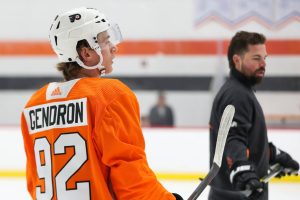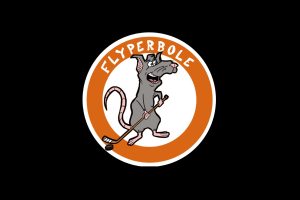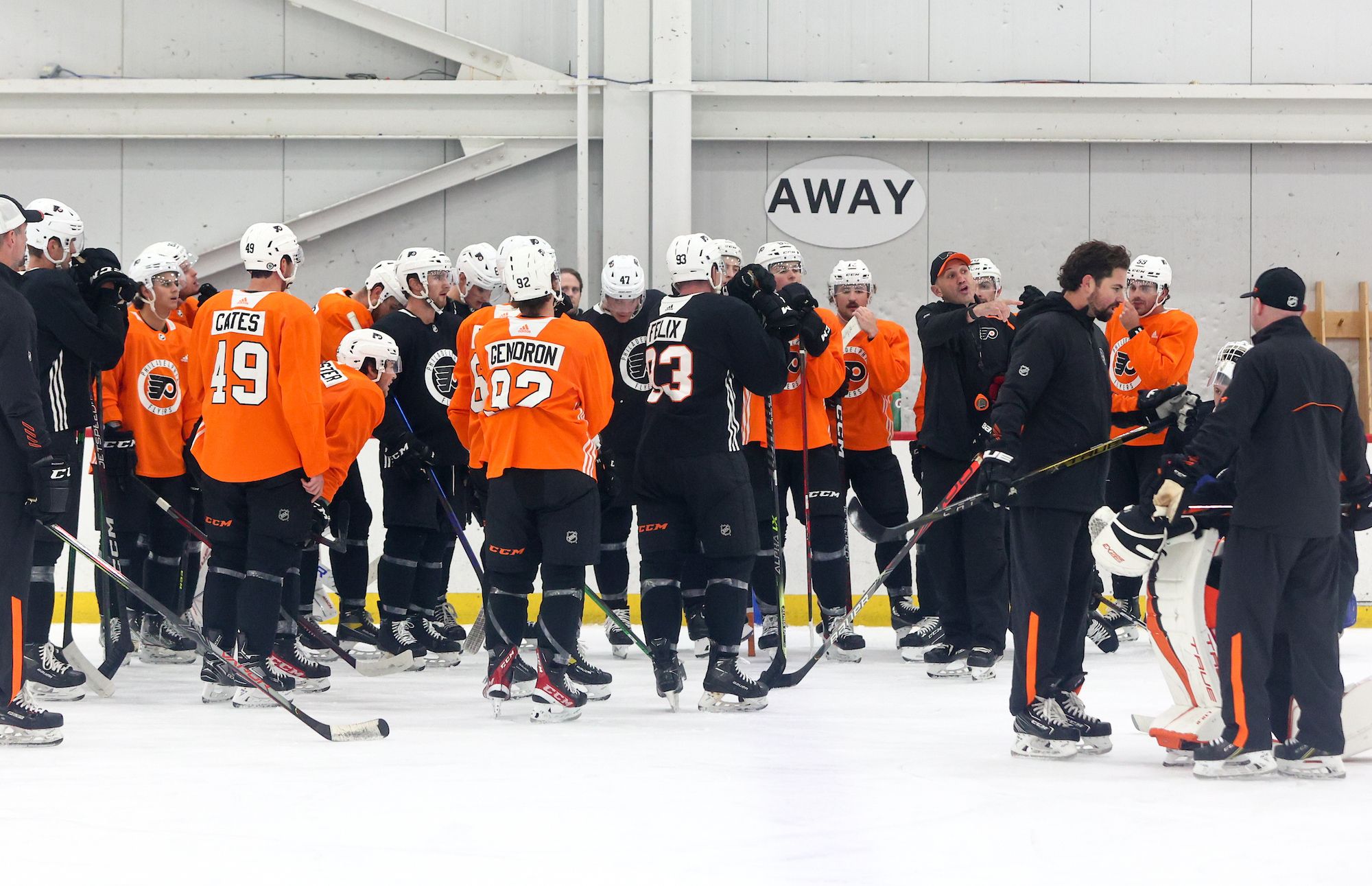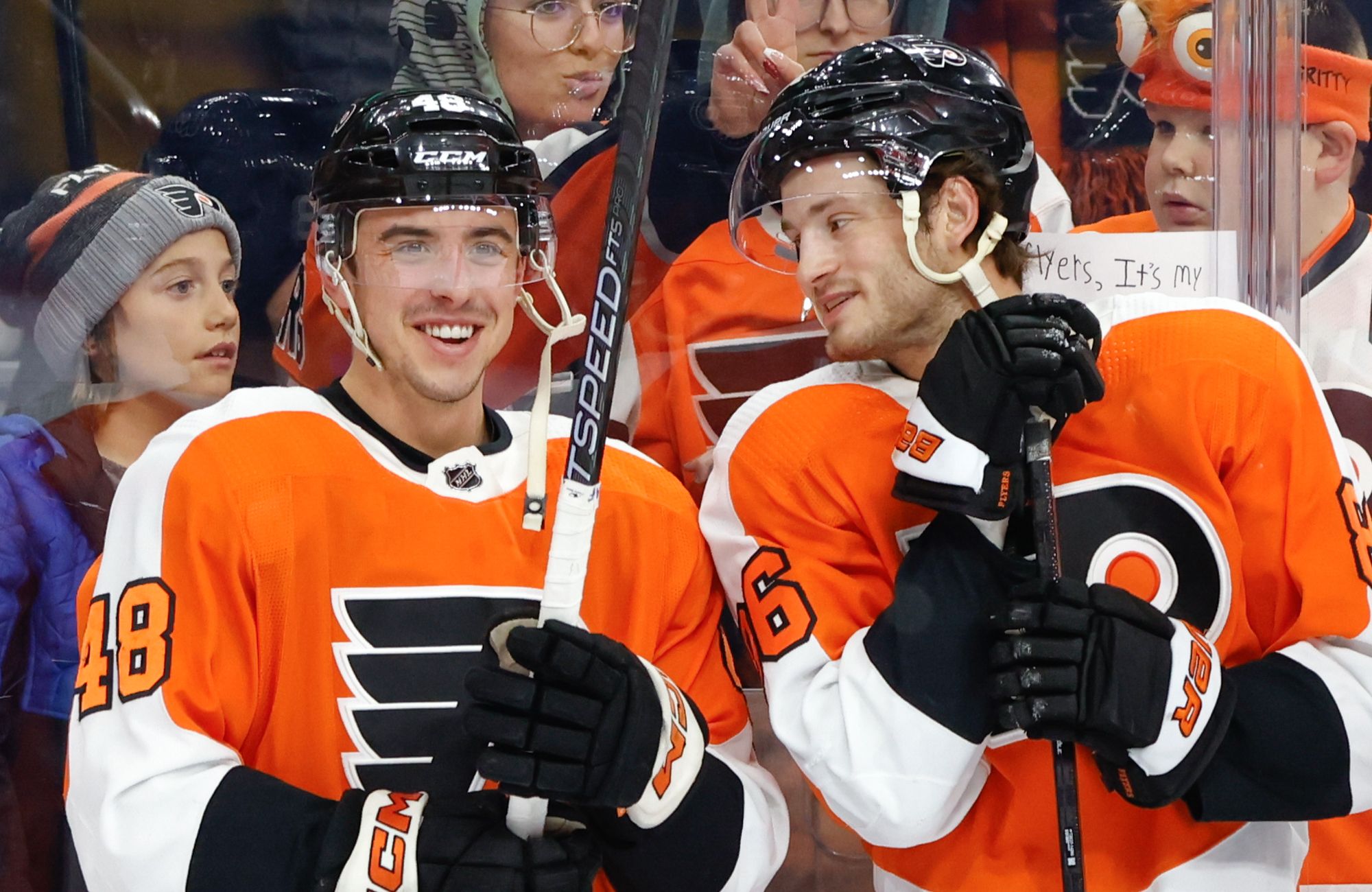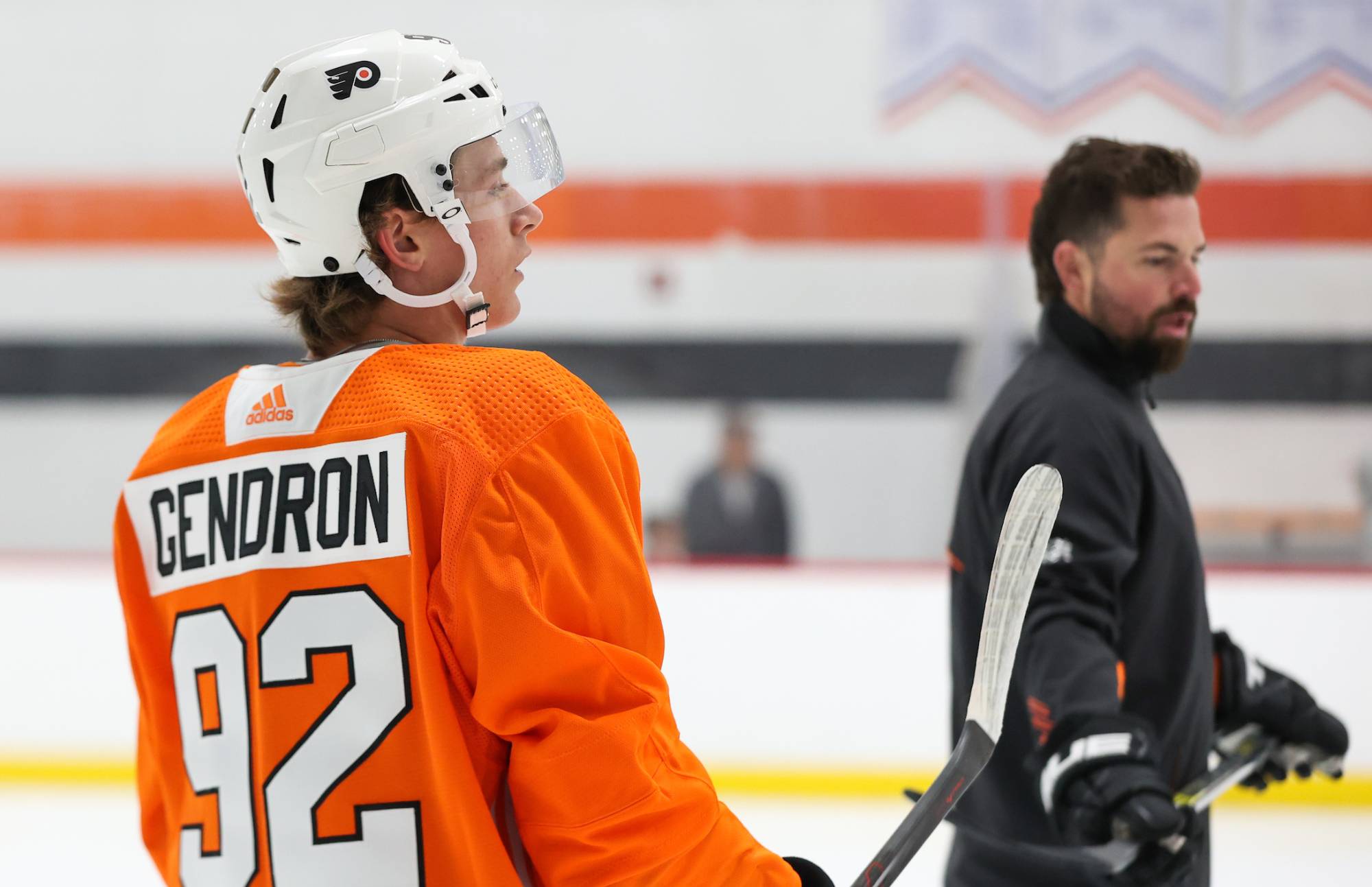Two weeks into the NHL season, the Philadelphia Flyers were sitting pretty. They sported a 4-2-1 record, and boasted wins over the Chicago Blackhawks and New York Rangers – two legitimate Stanley Cup contenders. Combined with wins over the Florida Panthers and Boston Bruins, and the Flyers were stating a case as a legitimate playoff threat.
But optimism met with a harsh dose of reality last week. The Flyers dropped three straight games, earning only one point in matchups against the Buffalo Sabres and New Jersey Devils. Philadelphia’s performance was especially disheartening considering the competition, as neither the Sabres nor the Devils harbor real playoff hopes.
Instead of using strong games against teams like the Rangers and Bruins as a springboard, the Flyers found themselves outplayed by squads worse than those Philadelphia had already beaten. Was the early season success simply a fluke? Are the Flyers actually on the level of Buffalo and New Jersey and still a long shot for a playoff berth?
Injuries partially explain the recent slide. Shutdown center Sean Couturier has missed four straight games due to a concussion, and fourth liner Pierre-Edouard Bellemare has been out since injuring his leg early in Tuesday’s contest against the Sabres. But injuries paint only part of the picture. The Flyers’ issues, while fixable, extend far beyond the absence of a second line center and a key penalty killer.
Special teams slumping
Entering the 2015-16 season, the Flyers were not projected to be a great even strength team. Replacing Nicklas Grossmann, Andrew MacDonald and Zac Rinaldo with Evgeny Medvedev, Radko Gudas and Sam Gagner was expected to help, but the defense remained weak and the offense lacked elite puck possessors beyond the first line. As a result, the Flyers would need to lean on elite special teams to make up for their deficiencies at 5v5.
Recently, the power play and penalty kill have not held up their end of the bargain.
The issues while shorthanded actually began before the team’s recent three game losing streak. Since their matchup against the Boston Bruins, the Flyers have killed only 13 of 19 penalties for an atrocious 68.4% success rate. For comparison, that’s almost six percentage points lower than the league’s worst shorthanded team since the 2004 lockout (2012-13 Florida Panthers).
The power play has struggled as well. After scoring at a solid 15 percent clip in the season’s first five games, Philadelphia posted an 8.33% success rate in the following five contests. Only Claude Giroux’s overtime game winner against Boston has kept the power play from being totally shut out over the past five games.
But looking at goal-based statistics can be misleading for both the penalty kill and the power play. The Flyers could be preventing shots and chances on the PK (and generating shots and chances with the man advantage) at their normal rate, yet falling victim to the variance of goaltending.
A quick glance at the statistics disproves that theory. There has been a decline in the underlying numbers of the Flyers’ special teams over the past five games, particularly in terms of shot attempt generation and prevention.
| Power Play (10/8 – 10/20) | Power Play (10/21 – 10/30) | |
| Power Play Efficiency | 15.0% | 8.33% |
| Shot Attempts For Per 60 (Corsi For) | 110.4 | 100.4 |
| High-Danger Chances Per 60 | 32.3 | 29.1 |
| Penalty Kill (10/8 – 10/20) | Penalty Kill (10/21 – 10/30) | |
| Penalty Kill Efficiency | 82.6% | 68.4% |
| Shot Attempts Against Per 60 (Corsi Against) | 80.1 | 111 |
| High-Danger Chances Against Per 60 | 38.4 | 39.1 |
Both the power play and the penalty kill are struggling in terms of shot attempts. The PP’s decline isn’t too worrying – a 100.4 CF60 would still place them in the top half of the league charts, so their slump is more an elite unit playing just above-average. The PK’s struggles are far more concerning. Their CA60 of 111 would rank 28th in the league had they performed at that level during all ten games, with only Minnesota and Buffalo posting worse statistics.
The impact of Sean Couturier’s injury cannot be overstated here. So far this season, the Flyers have only allowed 68.77 shot attempts per 60 when Couturier has skated on the penalty kill, and it’s unsurprising that the team started to struggle in shot prevention just as their top shorthanded forward exited the lineup.
Looking for optimism? The ability of Philadelphia to generate and prevent high-quality scoring chances on special teams has been mostly unaffected. On the PP, this likely means that the team is struggling to establish themselves in the offensive zone, but are still creating once they are there. While shorthanded, the Flyers are keeping opponents away from high-danger areas, but are failing to disrupt extended cycles or bottle teams up in the neutral zone.
Unfortunately, the Flyers cannot simply wait for Sean Couturier and Pierre-Edouard Bellemare to return from injury for their penalty kill to improve. They are not a strong enough even strength squad to struggle on special teams and expect to win games, even against opponents like the Sabres and Devils.
Early game defensive zone struggles
The recent special teams decline helps to explain why the Flyers were unable to take down middling foes like the Devils and Sabres. But it does not explain why the team was outplayed at even strength in all three losses, especially after they were able to carry the play against the Blackhawks, Bruins, and Rangers.
Poor first periods certainly haven’t helped.
On Tuesday night against the Sabres and on Thursday night against the Devils, the Flyers were consistently dominated in their own zone during the opening twenty minutes. While the score after the first period was tied in both instances, Philadelphia missed opportunities to impose their will in each game.
Through extensive tape study this season, I tracked the defensive zone play of all Flyers skaters, specifically their efforts to push the puck out of the Flyers’ end. So far this year, Philadelphia has an overall defensive zone turnover percentage of 12.19 percent. That statistic is calculated by tallying all defensive zone touches (times that the Flyers had legitimate control of the puck in their own zone) and determining how many of those touches resulted in a failed clear, an icing, an intercepted in-zone pass, or a simple misplay of the puck.
In the first period against the Sabres on October 27th, the Flyers posted a turnover percentage of 16.92%, measurably higher than their season average. Two nights later against the Devils they were even worse, finishing with a 19.30% turnover rate, as nearly one out of every five defensive zone touches resulted in the puck going right back to a New Jersey player.
This is a problem that simply cannot linger. The Devils, in particular, employed a heavy dump-and-chase strategy during close situations, possibly because they believed they could outwork the Flyers in the defensive zone. This made it less important for New Jersey to bother gaining the zone with possession – a far more difficult task than a dump-in. And their tactics were justified, as the Devils generated 0.67 shot attempts per uncontrolled zone entry during close situations, an abnormally high amount of pressure.
If the Flyers cannot clean up their defensive zone play, it will have a domino effect on the rest of Hakstol’s system. So far this year, Philadelphia has utilized an aggressive forecheck and a high neutral zone line to make it difficult for opponents to move through the middle of the ice with speed. The strategy worked wonders against Boston and Chicago, as both teams were held to controlled zone entry percentages below 42 percent.
But if teams decide that they can break down the Flyers in the defensive zone regardless of whether they gain entry with possession, the effectiveness of Philadelphia’s neutral zone pressure is muted. Instead, teams will bypass the pressure entirely with designed chip-and-chase plays, focusing their effort on forcing turnovers and not allowing the Flyers to exit the defensive zone with possession of the puck.
That, in turn, would make it tougher on Philadelphia to generate offense. Uncontrolled defensive zone exits often end up right on the stick of opposing defenders in the neutral zone, who can than shoot the puck right back into the Flyers’ zone. Because of poor defensive play, the Flyers will risk losing the neutral zone battle as well.
The good news is that the Flyers were much better in terms of defensive zone play on Friday night against the Sabres, posting a low turnover rate of 8.28 percent. But poor play in their own zone was a huge reason for the first two losses of the week, and it’s a problem that could prevent the Flyers from executing their preferred system as the season progresses and opponents scout Dave Hakstol’s squad more thoroughly.
Conclusion
The Flyers’ recent slump has been caused by a combination of struggling special teams and poor defensive zone play, especially early in games when the outcome is far from determined. Philadelphia’s power play and penalty kill have regressed from their early season highs, both in terms of goal-based efficiency and underlying shot attempt statistics.
The penalty kill’s decline can be partially attributed to the absence of Pierre-Edouard Bellemare and especially Sean Couturier, the team’s best shorthanded forward. Philadelphia’s struggles with the man advantage are less concerning, as the team’s underlying numbers still bode well for a turnaround.
It’s the defensive zone issues at even strength that could prove fatal to this team moving forward. So far, the struggles have been primarily limited to the first period, but their inability to exit the defensive zone while under pressure has disrupted the team’s preferred tactics.
The Flyers’ turnover rate improved significantly in Friday’s game against the Sabres, and hopefully is a sign that the problem is being addressed. But if opponents continue to dominate the Flyers in their own zone, it will make it that much more difficult for the team to take a serious run at the playoffs.
All statistics from War-On-Ice.com or manually tracked by Charlie O’Connor.



